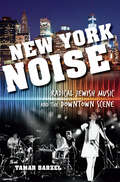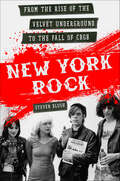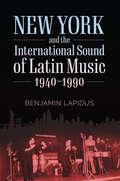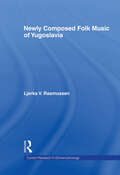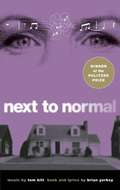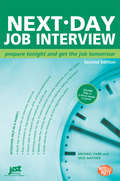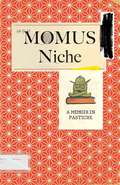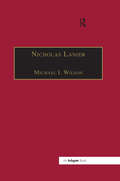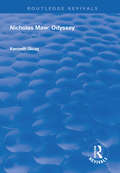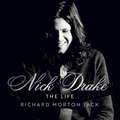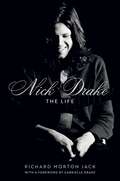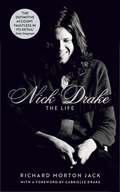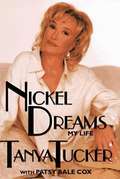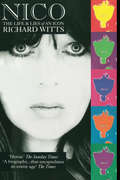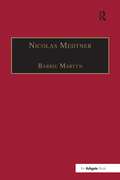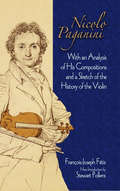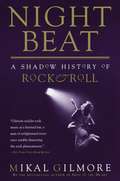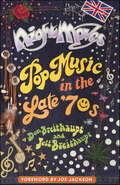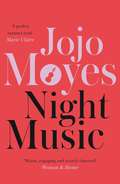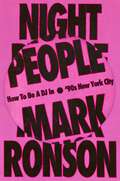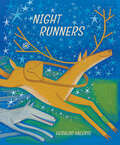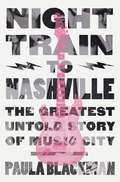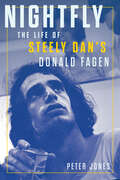- Table View
- List View
New York Noise: Radical Jewish Music and the Downtown Scene (Ethnomusicology Multimedia)
by Tamar BarzelAn up-close view of the 1990s music scene that brought us neo-klezmer bands, Tzadik Records, and a new vision of Jewish identity.Coined in 1992 by composer/saxophonist John Zorn, “Radical Jewish Culture,” or RJC, became the banner under which many artists in Zorn’s circle performed, produced, and circulated their music. New York’s downtown music scene, part of the once-grungy Lower East Side, has long been the site of cultural innovation, and it is within this environment that Zorn and his circle sought to combine, as a form of social and cultural critique, the unconventional, uncategorizable nature of downtown music with sounds that were recognizably Jewish.Out of this movement arose bands, like Hasidic New Wave and Hanukkah Bush, whose eclectic styles encompassed neo-klezmer, hardcore and acid rock, neo-Yiddish cabaret, free verse, free jazz, and electronica. Though relatively fleeting in rock history, the “RJC moment” produced a six-year burst of conversations, writing, and music—including festivals, international concerts, and nearly two hundred new recordings. During a decade of research, Tamar Barzel became a frequent visitor at clubs, post-club hangouts, musicians’ dining rooms, coffee shops, and archives. Her book describes the way RJC forged a new vision of Jewish identity in the contemporary world, one that sought to restore the bond between past and present, to interrogate the limits of racial and gender categories, and to display the tensions between secularism and observance, traditional values and contemporary concerns.Includes links to audiovisual content
New York Rock: From the Rise of The Velvet Underground to the Fall of CBGB
by Steven BlushSteven Blush's New York Rock presents the definitive history of a key period in rock ‘n’ roll, from new wave to no wave, punk to punk revival, from the bestselling author of American Hardcore. As a city that represents endless possibilities, New York has been the setting for the dawning of new movements, styles, and genres. In the 20th century, the birth of Rock represented a connection between art forms and the city’s socioeconomic, racial, and sexual variants. New York Rock breaks down the rock scene’s half-century connection to New York and analyzes its distinct subculture through the prism of influences, crosscurrents and psychoactive distractions. Over 1,500 musicians, clubs, and labels, from Madonna to the Ramones, held roles in the making of New York Rock, and it’s their contributions that created this iconic art form. A compilation of firsthand narratives about each genre of rock, from Punk New Wave and Glitter Rock to New York Hardcore and Indie rock, New York Rock is the ultimate illustrated account of Rock’s role in New York City.
New York and the International Sound of Latin Music, 1940-1990 (American Made Music Series)
by Benjamin LapidusNew York City has long been a generative nexus for the transnational Latin music scene. Currently, there is no other place in the Americas where such large numbers of people from throughout the Caribbean come together to make music. In this book, Benjamin Lapidus seeks to recognize all of those musicians under one mighty musical sound, especially those who have historically gone unnoticed. Based on archival research, oral histories, interviews, and musicological analysis, Lapidus examines how interethnic collaboration among musicians, composers, dancers, instrument builders, and music teachers in New York City set a standard for the study, creation, performance, and innovation of Latin music. Musicians specializing in Spanish Caribbean music in New York cultivated a sound that was grounded in tradition, including classical, jazz, and Spanish Caribbean folkloric music. For the first time, Lapidus studies this sound in detail and in its context. He offers a fresh understanding of how musicians made and formally transmitted Spanish Caribbean popular music in New York City from 1940 to 1990. Without diminishing the historical facts of segregation and racism the musicians experienced, Lapidus treats music as a unifying force. By giving recognition to those musicians who helped bridge the gap between cultural and musical backgrounds, he recognizes the impact of entire ethnic groups who helped change music in New York. The study of these individual musicians through interviews and musical transcriptions helps to characterize the specific and identifiable New York City Latin music aesthetic that has come to be emulated internationally.
Newly Composed Folk Music of Yugoslavia (Current Research in Ethnomusicology: Outstanding Dissertations #Vol. 1)
by Ljerka V. RasmussenFirst published in 2003. Routledge is an imprint of Taylor & Francis, an informa company.
Next to Normal
by Tom Kitt Brian YorkeyWinner of the 2010 Pulitzer Prize for Drama"Rock is alive and rolling like thunder in Next to Normal. It's the best musical of the season by a mile...an emotional powerhouse with a fire in its soul and a wicked wit that burns just as fiercely."-Rolling Stone"No show on Broadway right now makes as a direct grab for the heart-or wrings it as thoroughly-as Next to Normal does. . . . [It] focuses squarely on the pain that cripples the members of a suburban family, and never for a minute does it let you escape the anguish at the core of their lives. Next to Normal does not, in other words, qualify as your standard feel-good musical. Instead this portrait of a manic-depressive mother and the people she loves and damages is something much more: a feel-everything musical, which asks you, with operatic force, to discover the liberation in knowing where it hurts."-Ben Brantley, The New York TimesWinner of three 2009 Tony Awards, including Best Original Score (Music and/or Lyrics) Written for the Theatre, Next to Normal is also available in an original cast recording. It was named Best Musical of the Season by Rolling Stone, The Washington Post, Los Angeles Times, and The New York Times.Brian Yorkey received the 2009 Tony Award for Best Original Score for his work on Next to Normal and was also nominated for Best Book of a Musical. His other credits include Making Tracks and Time After Time.Tom Kitt received two 2009 Tony Awards for Best Original Score and Best Orchestrations for Next to Normal. He also composed the music for High Fidelity and From Up Here. His string arrangements appear on the new Green Day album 21st Century Breakdown, and he is the leader of the Tom Kitt Band.
Next-Day Job Interview
by Michael Farr Dick GaitherDistills JIST's revolutionary and proven interview advice into seven quick chapters covering self-assessment, company research, key questions, a system for answering any question that might come up, unusual situations, following up after the interview, salary negotiation, and more.
Niche: A Memoir in Pastiche
by Momus"Diarist, novelist, satirist, lyricist beyond peer."* In Niche: A Memoir in Pastiche, Nick Currie, a.k.a. Momus, presents the story of his life, career, and conquests on the margins of multiple music and art scenes.Momus—named for the ancient Greek god of mockery, and described by The Guardian as “the David Bowie of the art-pop underground”—has recorded over thirty albums for labels like 4AD and Creation, published half a dozen works of speculative fiction, and written articles for The New York Times, Wired, ArtForum, Frieze, and The Wire. An unknown band called Pulp once asked him to produce their next album. (He said no.) An unknown band called Of Montreal once invited him to go on tour with them. (He said no.) He’s collaborated with fans Vampire Weekend and with the Magnetic Fields’ Stephin Merrit. He’s had an impression of his penis preserved by the notorious Cynthia Plaster Caster. Maybe you’ve heard of him. Probably you haven’t. This is his story. Or, rather, stories.Rather than one avuncular tell-all relayed in his own voice, Momus has structured the narrative of his life as a typically atypical mockery of the rock-bio oral history. Instead of using living witnesses, Momus assumes the voices of 217 dead authors and artists and forces them to speak for and about him. From these dramatic monologues—sometimes unreliable, often comical—there gradually emerges a picture of one eccentric star’s life across three continents and in his own, remarkable, niche."Herein is spun the tale of the immortally fabulous life and glittering times of our dodgy Anthropocene’s greatest still-living songwriter, as related by a chorus of eerie, mocking, sometimes supportive, often judgmental post-mortem Raudive voices in a séance spanning centuries of ectoplasmic ‘I told you so.’ Here is why Momus may one day be canonized the first saint of a religion yet to be dreamed . . . Read, be enlightened, and pretend you always knew." *—Grant Morrison, comic book writer and superfan
Nicholas Lanier: Master of the King's Musick
by MichaelI. WilsonNicholas Lanier (1588-1666) was not only the first person to hold the office of Master of the Music to King Charles I, he was also a practising painter, a friend of Rubens, Van Dyck and many other artists of his time, and one of the very first great art collectors and connoisseurs. He is especially remembered for the part he played in acquiring, on behalf of Charles I, the famous collection of paintings belonging to the Gonzaga family of Mantua. Many of these paintings still form an important part of the Royal Collection today. In this book the different strands of Lanier's colourful life are for the first time drawn together and presented in a single compelling narrative.
Nicholas Maw: Odyssey (Routledge Revivals)
by Kenneth GloagThis book was originally published in 2008. Nicholas Maw's Odyssey is a landmark in contemporary music; at approximately 90 minutes it is one of the longest continuous examples of music written for full-orchestra and received a first, truncated, performance at the 1987 BBC Proms. It took Maw many years to complete and was later recorded to great acclaim by Sir Simon Rattle and the City of Birmingham Symphony Orchestra. In his examination of Odyssey, Kenneth Gloag provides a detailed discussion of Maw's musical identity and reputation as a contemporary composer in relation to romanticism, modernism and postmodernism, taking into consideration his break-through work Scenes and Arias (1962) and the subsequent progression to Odyssey. The book investigates issues of time and narrative crucial to the generation of the work's remarkable length, and considers the relationship between the sectionalization of the score and prevailing sense of unity in the music. Situating Odyssey in larger historical and critical frameworks, Gloag evaluates the initial reception of the work and reflects on Maw's music composed after Odyssey.
Nick Drake: The Life
by Richard Morton JackThe full life of one of the greatest singer-songwriters of the twentieth century, with a Foreword by his sister Gabrielle Drake.'This is the book we've been waiting for - the one Nick's legacy deserves and so badly needs. Richard Morton Jack has reconstructed Nick's life with great sensitivity and care, and in remarkable detail. It is a biography to be treasured' Joe BoydIn 1968 Nick Drake had everything to live for. The product of a loving, creative family and a privileged background, he was not only a handsome and popular Cambridge undergraduate, but also a new signing to the UK's hippest record label, Island.Three years later, however - having made three well-reviewed but low-selling albums - Nick had been overwhelmed by a mysterious mental illness. He returned to live in his family home in rural Warwickshire in 1971, and died in obscurity in 1974, aged just 26.In the decades since, Nick has become the subject of ever-growing fascination and speculation. Combined sales of his records now stand in the millions, his songs are frequently heard on TV and in films, and he has become one of the most widely known and admired singer-songwriters of his generation.Nick Drake: The Life is the only biography of Nick to be written with the blessing and involvement of his sister and Estate. Drawing on copious original research and new interviews with his family, friends and musical collaborators, as well as deeply personal archive material unavailable to previous writers - including his father's diaries, his essays and private correspondence - this is the most comprehensive and authoritative account possible of Nick's short and enigmatic life.Includes a foreword by Gabrielle Drake.(P) 2023 Hodder & Stoughton Limited
Nick Drake: The Life
by Richard Morton JackExperience the definitive biography of one of the greatest singer-songwriters of the twentieth century with this eye-opening book featuring a foreword by Gabrielle Drake and over 75 photos, many rare or previously unseen. In 1968, Nick Drake had everything to live for. The product of a loving, creative family and a privileged background, he was not only a handsome and popular Cambridge undergraduate, but also a new signing to the UK&’s hippest record label, Island. Three years later, however—having made three well reviewed but low-selling albums—Nick had been overwhelmed by a mysterious mental illness. He returned to live in his family home in rural Warwickshire in 1971, and died in obscurity in 1974, aged just 26. In the decades since, Nick has become the subject of ever-growing fascination and speculation. Combined sales of his records now stand in the millions, his songs are frequently heard on TV and in films, and he has become one of the most widely known and admired singer-songwriters of his generation. Nick Drake: The Life is the only biography of Nick to be written with the blessing and involvement of his sister and estate. Drawing on copious original research and new interviews with his family, friends, and musical collaborators, as well as deeply personal archive material unavailable to previous writers—including his father&’s diaries, his essays, and private correspondence—this is the most comprehensive and authoritative account possible of Nick&’s short and enigmatic life.
Nick Drake: The Life
by Richard Morton Jack'This is the book we've been waiting for . . . It is a biography to be treasured' Joe Boyd'The Drake completist could ask for nothing else' Daily Telegraph'Illuminating. The definitive word on Drake' ObserverIn 1968 Nick Drake had everything to live for. The product of a loving, creative family and a privileged background, he was not only a handsome and popular Cambridge undergraduate, but also a new signing to the UK's hippest record label, Island.Three years later, however - having made three well-reviewed but low-selling albums - Nick had been overwhelmed by a mysterious mental illness. He returned to live in his family home in rural Warwickshire in 1971, and died in obscurity in 1974, aged just 26.In the decades since, Nick has become the subject of ever-growing fascination and speculation. Combined sales of his records now stand in the millions, his songs are frequently heard on TV and in films, and he has become one of the most widely known and admired singer-songwriters of his generation.Nick Drake: The Life is the only biography of Nick to be written with the blessing and involvement of his sister and Estate. Drawing on copious original research and new interviews with his family, friends and musical collaborators, as well as deeply personal archive material unavailable to previous writers - including his father's diaries, his essays and private correspondence - this is the most comprehensive and authoritative account possible of Nick's short and enigmatic life.Includes a foreword by Gabrielle Drake and over 75 photos, many rare or previously unseen.
Nico: Life And Lies Of An Icon
by Richard WittsNico was revered as ‘the most beautiful creature who ever lived’. She was Andy Warhol’s femme fatale and the High Preistess of Weird, yet few knew her real name or her wretched origins. When she called herself ‘a Nazi anarchist junkie’, they thought she was joking.Bob Dylan wrote a song about her, Jim Morrison a poem, Jean Baudrillard an essay, Andy Warhol a film, Ernest Hemingway a story – yet she fought against the idolatry of men to assert her independence as a composer of dissident songs.Nico’s contribution as an artist (17 films and 7 LPs) was smothered by gossip of her alleged affairs with men and women, whether Jimi Hendrix or Jeanne Moreau, Brian Jones of the Rolling Stones or Coco Chanel.She drifted through society like a phantom. Each era celebrated a different Nico – the top covergirl of the Fifties, the Siren of the Sixties (as The Times acclaimed her), the Moon Goddess of the Seventies, and the High Priestess of Punk when rock stars like Siouxsie Sioux and Pattie Smith acknowledged her pre-eminence. Ironically, they did so at the lowest point in her life. For behind the Garbo-esque veneer lived a lonely woman trying to stand autonomous in a fast-changing world, seeking to survive her heroin addiction and to cope with her tormented mother and her troubled son, his existence denied by his film-star father.In this pioneer biography, which Nico asked the author to write shortly before her outlandish death in 1988, Richard Witts uncovers the reasons for her subterfuge, and examines the facts surrounding her encounters with terrorist Andreas Baader, the Black Panthers, and the Society for Cutting Up Men. Exclusive contributions from artists such as Jackson Browne, Iggy Pop, Viva, John Cale, David Bailey, Siouxsie Sioux – and many others including her relatives, friends and enemies – make this the definitive biography of an icon who was not only a testament to an era but hitherto unrecognised influence on popular music and style.
Nicolas Medtner: His Life and Music
by Barrie MartynNicholas Medtner (1880-1951) has always been a neglected figure in the history of Russian music, and yet his friend Rachmaninoff considered him the greatest of contemporary composers. He wrote three fine piano concertos, more than one hundred solo piano compositions, including a cycle of fourteen sonatas fully worthy to be set alongside those of Scriabin and Prokofiev, and many beautiful songs. He was also a great pianist. Leaving Russia after the Bolshevik Revolution, Medtner lived for a time in Germany and France before finally settling in London, where he passed the final sixteen years of his life. The present work is the first to tell the full story of his eventful life and to consider in turn each of his compositions. The author has drawn on Medtner‘s own correspondence and writings and collected the reminiscences of those who knew him personally to build a comprehensive picture of a great, if still largely unrecognised, musician.
Nicolo Paganini: With an Analysis of His Compositions and a Sketch of the History of the Violin (Dover Books on Music)
by Stewart Pollens Francois-Joseph FetisWritten by an immensely important musicologist, this rare 1860 monograph analyzes Nicolo Paganini's compositions and provides a fascinating history of the violin. Author François-Joseph Fétis was Paganini's close friend and well acquainted with many other Romantic composers and artists. Students of the history of music, music lovers, violinists, and musicologists will find this volume a rare source of firsthand observations on the legendary violin virtuoso and his circle.The treatise begins with a survey of the violin's history that profiles famous makers, including the Amati, Stradivari, and Guarneri families. The subsequent essay, "Art and Artists," provides a concise review of performances, focusing on the Italian and French schools. The biography of Paganini follows, providing rare perspectives on the artist's playing, personal habits, and social behavior -- a colorful portrait of a legendary musician as well as a valuable historical resource.
Nietzsche's Orphans
by Rebecca MitchellA prevailing belief among Russia's cultural elite in the early twentieth century was that the music of composers such as Sergei Rachmaninoff, Aleksandr Scriabin, and Nikolai Medtner could forge a shared identity for the Russian people across social and economic divides. In this illuminating study of competing artistic and ideological visions at the close of Russia's "Silver Age," author Rebecca Mitchell interweaves cultural history, music, and philosophy to explore how "Nietzsche's orphans" strove to find in music a means to overcome the disunity of modern life in the final tumultuous years before World War I and the Communist Revolution.
Night Beat: A Shadow History of Rock and Roll
by Mikal GilmoreFew journalists have staked a territory as definitively and passionately as Mikal Gilmore in his twenty-year career writing about rock and roll. Now, for the first time, this collection gathers his cultural criticism, interviews, reviews, and assorted musings. Beginning with Elvis and the birth of rock and roll, Gilmore traces the seismic changes in America as its youth responded to the postwar economic and political climate. He hears in the lyrics of Bob Dylan and Jim Morrison the voices of unrest and fervor, and charts the rise and fall of punk in brilliant essays on Lou Reed, The Sex Pistols, and The Clash. Mikal Gilmore describes Bruce Springsteen's America and the problem of Michael Jackson. And like no one else, Gilmore listens to the lone voices: Al Green, Marianne Faithfull, Sinead O'Connor, Frank Sinatra. Four decades of American life are observed through the inimitable lens of rock and roll, and through the provocative and intelligent voice of one of the most committed chroniclers of American music, and its powerful expressions of love, soul, politics, and redemption.
Night Moves: Pop Music in the Late '70s
by Don Breithaupt Jeff BreithauptThe late 1970s brought us an eclectic mix of popular music--everything from big hits (and even bigger hair) to cult favorites, along with the dawn of disco and punk, the coming of corporate rock, the rise of reggae and new wave, and some of the most progressive, inventive songwriting of the century.Whether you cranked up your radio for Bruce Springsteen, Stevie Wonder, Supertramp, the Bee Gees, Talking Heads, Rickie Lee Jones, or Earth, Wind and Fire, you'll relive those heady days with this compulsively readable, behind-the-scenes account of the "Frampton years," an era when pop became very big business. It's all here, from ABBA to Zevon. Night Moves by Don Breithaupt and Jeff Breithaupt is a feisty, funny volume that will leave pop fans of every stripe feeling Reunited, Afternoon Delight-ed, and Still Crazy After All These Years.
Night Music: The Sunday Times bestseller full of warmth and heart
by Jojo MoyesThe dark and romantic novel by Jojo Moyes, internationally bestselling author of Me Before You and the new bestseller The Giver of Stars. ****'Warm, engaging and acutely observed.' - Woman and HomeIsabel Delancey has always taken her gifted life for granted. But when her husband dies suddenly, leaving her with a mountain of debt, she and her two children are forced to abandon their home and move to a crumbling pile in the country.With the house falling down around them, and the last of her savings fast disappearing, Isabel turns to her neighbours, not knowing that her mere presence there has stirred up long-standing obsessions.As she fights to make her house a home, passions and lives collide. Isabel will discover an instinct for survival she never knew she had - and that a heart can play a new song . . .'A skilful blend of emotional intensity and satisfyingly drawn characters' - Marie Claire
Night Music: The Sunday Times bestseller full of warmth and heart
by Jojo Moyes**From the bestselling author of The Last Letter from Your Lover, soon to be a major motion picture**The dark and romantic novel by Jojo Moyes, internationally bestselling author of Me Before You and the new bestseller The Giver of Stars. ****'Warm, engaging and acutely observed.' - Woman and HomeIsabel Delancey has always taken her gifted life for granted. But when her husband dies suddenly, leaving her with a mountain of debt, she and her two children are forced to abandon their home and move to a crumbling pile in the country.With the house falling down around them, and the last of her savings fast disappearing, Isabel turns to her neighbours, not knowing that her mere presence there has stirred up long-standing obsessions.As she fights to make her house a home, passions and lives collide. Isabel will discover an instinct for survival she never knew she had - and that a heart can play a new song . . .'A skilful blend of emotional intensity and satisfyingly drawn characters' - Marie Claire
Night People: How to Be a DJ in '90s New York City
by Mark RonsonCapturing the music, characters, escapades, and energy of his DJ days, a profound memoir from seven-time Grammy-winning record producer Mark Ronson. <P><P> Lady Gaga, Adele, Amy Winehouse, Dua Lipa, Bruno Mars, Miley Cyrus, the Barbie soundtrack—behind some of the biggest musical moments in the past two decades is one man: Mark Ronson. Night People conjures the undeniable magic of the city's bygone nightlife—a time when clubs were diverse, glamorous, and a little lawless, and each night brought a heady mix of music, ambition, danger, delight, and possibility. It's about the beauty of what you can create with just two Technics and a mixer, in a golden era before Giuliani, camera phones, and bottle service upended everything. <P><P> It's also about a teenager finding his way—stalking DJ Stretch Armstrong and biting his mixes, crate-digging in every corner of New York, grinding gig after gig through a decade of incredible music—and finding a community of people who, in their own strange, cracked ways, lived for the night. <P><P> Organized around the venues that defined his experience of the downtown scene, Ronson evokes the specific rush of that decade and those spaces—where fashion folks and rappers on the rise danced alongside club kids and 9-to-5'ers—and invites us into the tribe of creatives and partiers who came alive when the sun went down. A heartfelt coming-of-age tale, Night People is the definitive account of '90s New York nightlife and the making of a musical mastermind. <P><P> <B>New York Times Bestseller</B>
Night Runners
by Geraldo ValérioWhat seems scary proves surprising in this magical wordless picture book. Guided by a circle of stars on the horizon, a stag bounds into a thick pine forest. Wolves lurk behind the trees, then begin to run after him. When the stag turns to look at his pursuers, he stumbles over a fallen tree and sinks to the forest floor. The wolves close in … but, unexpectedly, they become the stag’s helpers, bringing water, berries and a bandage! After a short rest, the stag and wolves continue the mysterious journey, still following the stars. They finally reach their destination — a campfire, surrounded by all sorts of animals. The stag reaches into his satchel for a ukulele, and a joyful evening of music and dance begins. The musician has arrived just in time for the festivities, along with his back-up singers — the pack of howling wolves! This stunning wordless picture book from artist Geraldo Valério explores overturned expectations, friendship among unlikely companions, and the joy of singing and dancing under the stars. Key Text Features illustrations wordless Correlates to the Common Core State Standards in English Language Arts: CCSS.ELA-LITERACY.RL.K.3 With prompting and support, identify characters, settings, and major events in a story. CCSS.ELA-LITERACY.RL.1.3 Describe characters, settings, and major events in a story, using key details. CCSS.ELA-LITERACY.RL.1.7 Use illustrations and details in a story to describe its characters, setting, or events.
Night Train to Nashville: The Greatest Untold Story of Music City
by Paula BlackmanSet against the backdrop of Jim Crow, Night Train to Nashville takes readers behind the curtain of one of music's greatest untold stories during the era of segregation and Civil Rights.In another time and place, E. Gab Blackman and William Sousa "Sou" Bridgeforth might have been as close as brothers, but in 1950s Nashville they remained separated by the color of their skin. Gab, a visionary yet opportunistic radio executive, saw something no one else did: a vast and untapped market with the R&B scene exploding in Black clubs across the city. He defied his industry, culture, government, and even his own family to broadcast Black music to a national audience.Sou, the popular kingpin of Black Nashville and a grandson of slaves, led this movement into the second half of the twentieth century as his New Era Club on the Black side of town exploded in the aftermath of this new radio airplay. As the popularity of Black R&B grew, integrated parties and underground concerts spread throughout the city, and this new scene faced a dangerous inflection point: Could a segregated society ever find true unity?Taking place during one of the most tumultuous times in US history, Night Train to Nashville explores how one city, divided into two completely different and unequal communities, demonstrated the power of music to change the world.
Nightfly: The Life of Steely Dan's Donald Fagen
by Peter JonesDonald Fagen will forever be associated with Steely Dan, the band he formed with Walter Becker and four other musicians in 1972. The smooth, radio-friendly veneer of the duo's songs made Steely Dan internationally popular and famous in the 1970s, but the polish glossed over the underlying layers of anger, disappointment, sleaze, and often downright weirdness lurking just beneath the surface. The elliptical lyrics were—and continue to be—an endless source of fascination. What kind of person was capable of writing such songs? Fagen has always kept his true self hidden behind walls of irony, confounding most journalistic enquiries with a mixture of obscurity and sarcasm. Nightfly cracks open the door to reveal the life behind the lyrics and traces Fagen's story from early family life in suburban New Jersey, to his first encounter with Walter Becker at Bard College, their long struggle for recognition as songwriters, and the formation of Steely Dan. The band's break-up in 1981, re-formation in 1993, and Fagen's parallel solo career are covered in detail.Author Peter Jones seeks to explain the public's continuing fascination with Fagen's music, both in collaboration with Becker and as a solo artist.
